✓ Joining us on our Whatsapp Channel: 💬 Explore and Escape!.
Booking through us:
✓ 🏩 🛌 Handpicked Luxury Stays in Budget: Booking.com | Agoda.com
✓ 🍹⛱️ Deals on Private xfers, SIM Cards, City tours, Day trips : 📍🗺️ GetYourGuide | 🛵🧳 Klook
There are an array of things to do in Spain, with Santiago de Compostela sharing quite a few of those!
Santiago de Compostela is a mecca for travelers seeking an authentic experience in the heart of Spain’s Galicia region.
From wandering through the cobbled streets of the Old Town, to marveling at the soaring towers of the Cathedral of Santiago de Compostela, there is no shortage of enchanting things to do and see in this charming city.
Ready to immerse yourself in the rich culture and history of Santiago?
Let’s explore!
Without further ado listed below are some of the most fun things to do in Santiago de Compostela:
1. Cathedral of Santiago de Compostela
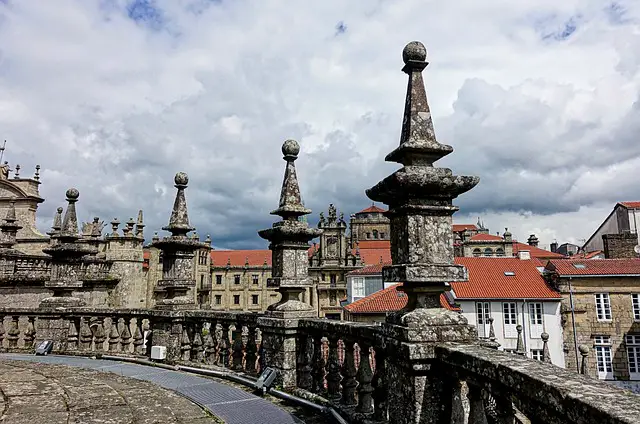
A Roman Catholic cathedral located in the city of Santiago de Compostela, Galicia, Spain.
What to see or do: – Admire the exterior architecture of the cathedral, a mix of Romanesque, Gothic, and Baroque styles.
Don’t miss: – The Botafumeiro, an enormous incense holder that swings through the cathedral during special occasions.
Insider travel tips: – The cathedral gets very crowded during the high season (July and August), so plan to arrive early in the morning to avoid the crowds.
2. Praza do Obradoiro
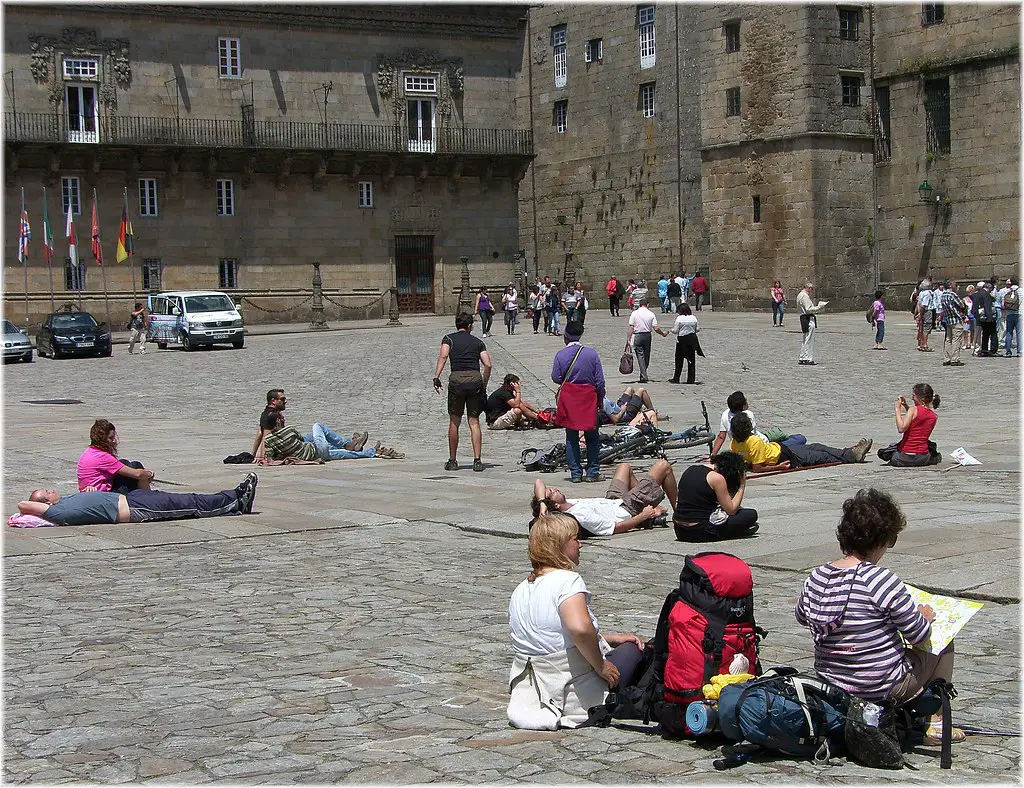
Praza do Obradoiro is the main square in the historic center of Santiago de Compostela, Spain.
What to see or do: Take in the stunning architectural beauty of surrounding buildings, including the Cathedral of Santiago de Compostela, the Raxoi Palace, and the Hostal de los Reyes Católicos.
Don’t miss: The famous fountains located in the middle of the square, which provide refreshing relief from the Spanish sun.
Insider travel tips: Visit early in the morning or late in the evening to avoid the crowds and fully appreciate the peacefulness of the square.
Keep in mind that during big events or celebrations, the Praza do Obradoiro may be closed to visitors.
3. Monastery of San Martín Pinario
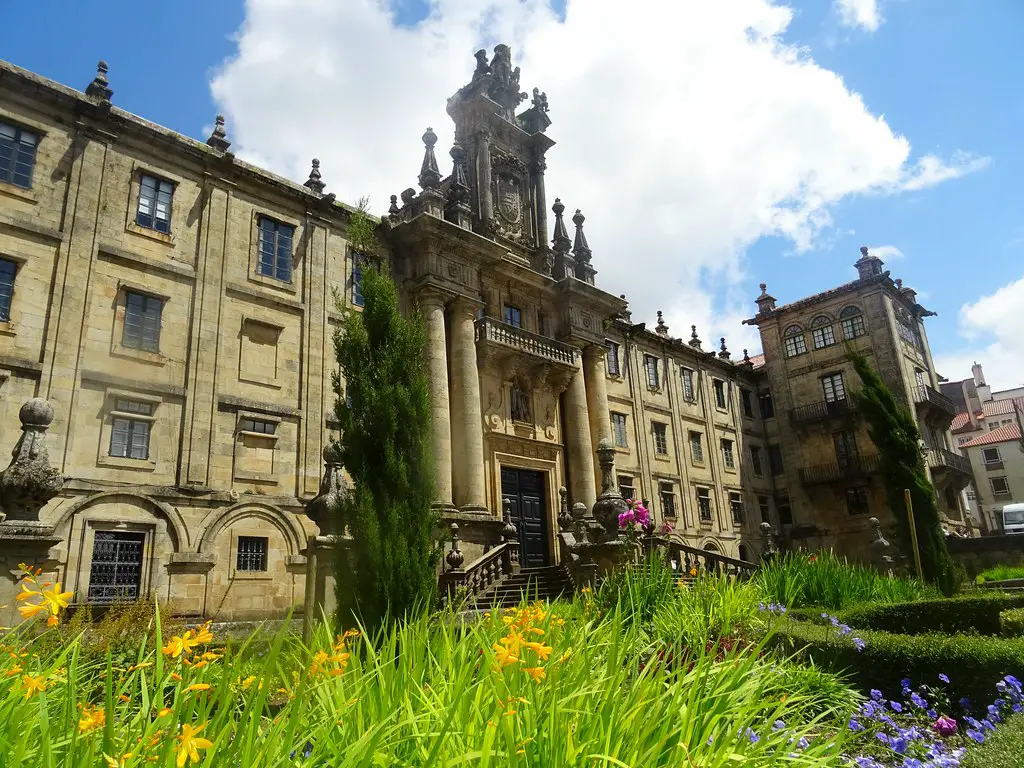
Monastery of San Martín Pinario is a historic, religious monastic complex located in the heart of Santiago de Compostela.
What to see or do: Visitors can explore the grand architecture of the complex, including the stunning Baroque church and ornate cloister. The monastery is also home to a museum showcasing religious art and artifacts.
Don’t miss: The impressive pipe organ in the church, which dates back to the 18th century and is considered one of the best in Spain.
The view from the monastery’s tower, offering a bird’s eye view of Santiago de Compostela.
Insider travel tips: Visit early in the morning to avoid crowds and to experience the peaceful quiet of the monastery. Consider taking a guided tour to learn more about the history and significance of the complex.
4. Plaza de Quintana
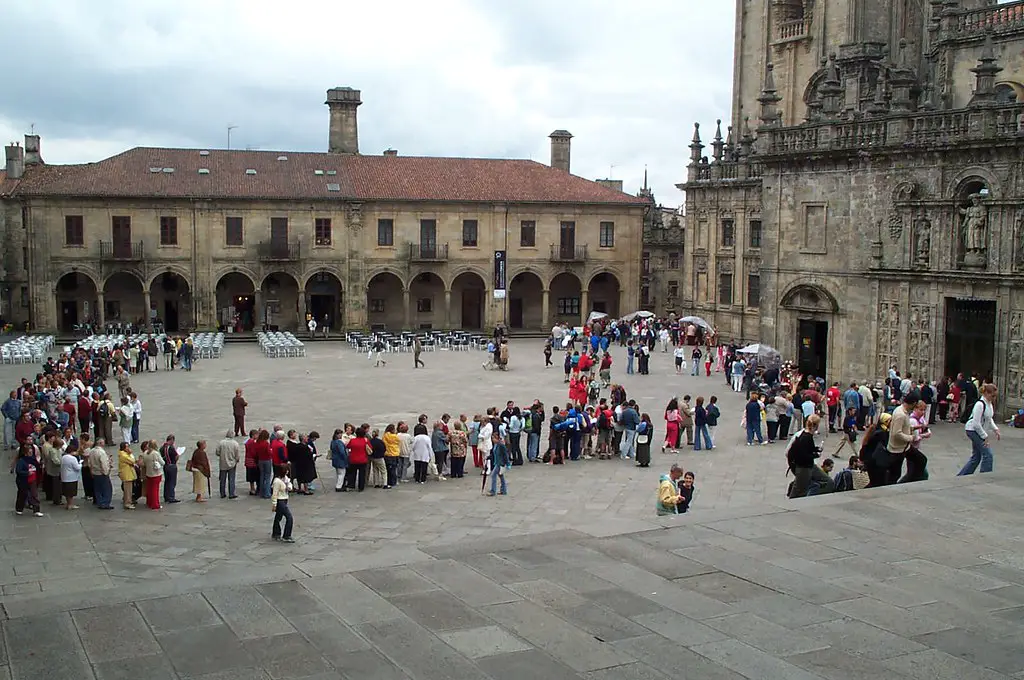
Plaza de Quintana is a historic square located in the center of Santiago de Compostela, Spain. It is a popular gathering spot for locals and tourists alike.
What to see or do: The square itself is impressive, with its grand staircase leading up to the impressive Baroque facade of the Igrexa de Santa María de Quintana church.
Visitors can take in the views of the surrounding architecture, including the stunning Raxoi Palace and Pazo de Raxoi buildings.
Don’t miss: The square is especially beautiful at night, when it is lit up with soft lighting that showcases the square’s stunning architecture.
Insider travel tips: For the best experience, visit the Plaza de Quintana early in the morning or in the late afternoon when it is less crowded.
If you want to avoid the crowds altogether, consider visiting during the off-season (October-April). Also, be sure to wear comfortable shoes, as the plaza is made of uneven cobblestones.
5. Palace of Raxoi
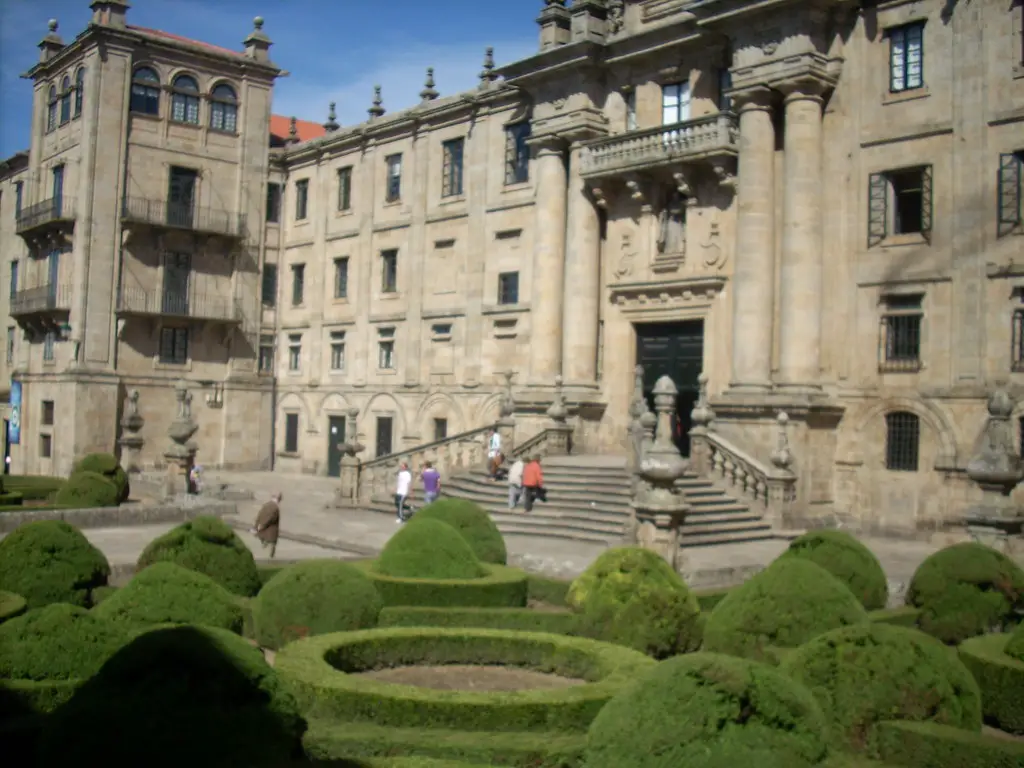
The Palace of Raxoi is a neoclassical building located in the Praza do Obradoiro, in the historic center of Santiago de Compostela, Spain.
It is the official residence of the President of the Regional Government of Galicia and the Archbishop of Santiago de Compostela.
What to see or do: Visitors can admire the impressive facade of the palace, which features two symmetrical wings with a central body crowned by a triangular pediment.
The palace also has a beautiful inner courtyard and a chapel dedicated to Our Lady of the Angels.
Don’t miss: Don’t miss the changing of the guard ceremony that takes place in front of the palace every day at noon. It is a unique opportunity to see the soldiers in their traditional uniforms performing their duties with precision and solemnity.
Insider travel tips: – The palace is located in one of the busiest tourist areas in Santiago de Compostela, so it is advisable to visit early in the morning or late in the afternoon to avoid crowds.
6. Monastery of San Francisco de Asís de Valdediós
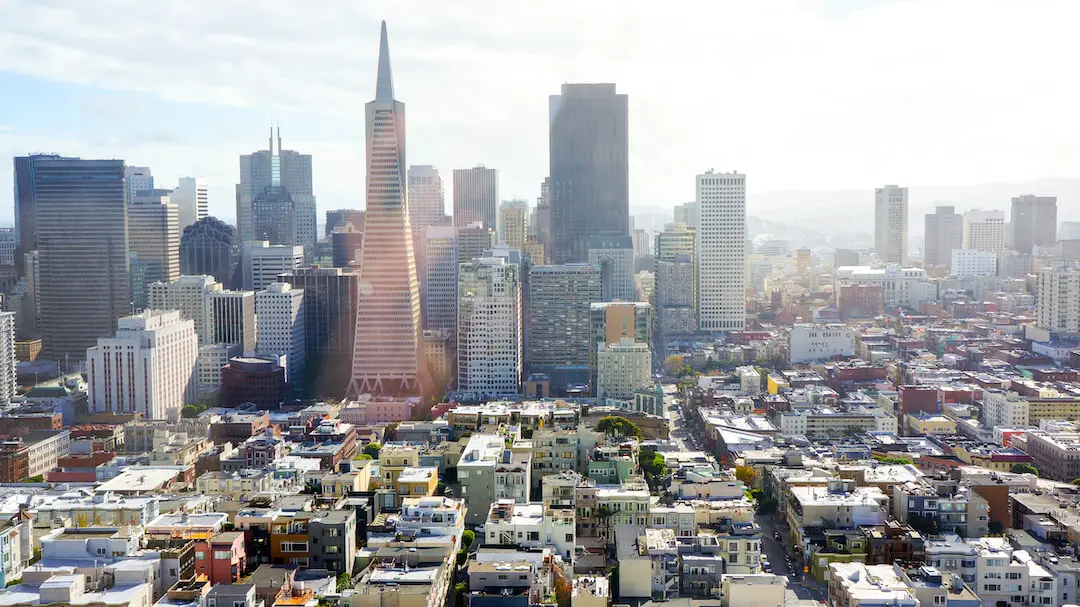
Monastery of San Francisco de Asís de Valdediós is a religious building in northern Spain, located near Villaviciosa, Asturias.
What to see or do: Visitors can tour the monastery and see the beautiful architecture and artwork. The monastery also contains a library with ancient texts and documents.
Don’t miss: The Gothic-style church with its impressive altarpiece is a must-see highlight of the monastery.
Insider travel tips: Visitors should dress modestly and be respectful of the religious nature of the site. It is also recommended to check the monastery’s opening times in advance, as they may vary throughout the year.
7. Monastery of San Paio de Antealtares

Monastery of San Paio de Antealtares is a religious building located in the historic center of Santiago de Compostela, Spain.
What to see or do: Visitors can explore the monastery’s beautiful cloister and garden, as well as its chapel and sacristy. The monastery is also known for its valuable library, which contains numerous important manuscripts and documents.
Don’t miss: Don’t miss the chance to see the monastery’s elaborate Baroque altarpiece, which is considered to be one of the finest examples of its kind in Galicia.
Insider travel tips: If you’re visiting the Monastery of San Paio de Antealtares during the summer months, be sure to bring sunscreen and a hat, as the cloister can get very hot and sunny.
Additionally, if you’re interested in the monastery’s library, you may need to make advance arrangements to view some of its more valuable items.
8. Museum of the Galician People
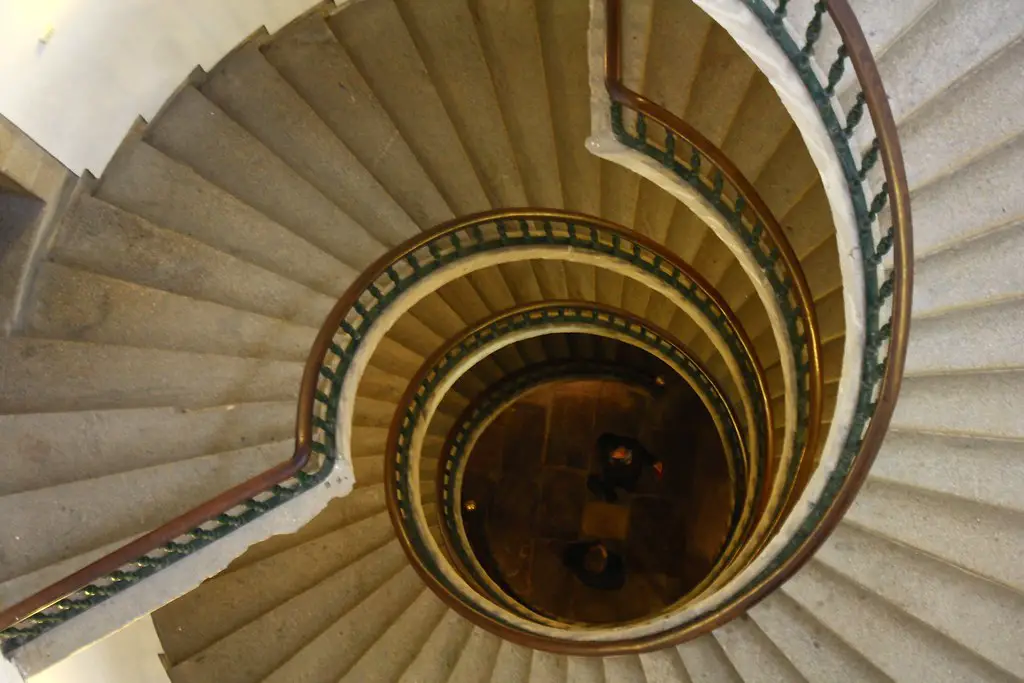
The Museum of the Galician People is a cultural institution that showcases the rich history, art, and culture of Galicia, an autonomous community in northwest Spain.
What to see or do: Visitors can explore the museum’s collection of over 20,000 objects, ranging from traditional clothing and crafts to ancient artifacts and contemporary art pieces.
The museum provides an in-depth look at the unique customs, traditions, and experiences of Galician people throughout history.
Don’t miss: One of the most fascinating exhibits is the replica of a Galician hillside village, complete with a stone house, granary, and chapel, showcasing the traditional way of life in rural Galicia.
Insider travel tips: – The museum is located in the historic city center of Santiago de Compostela, so it’s a great addition to any walking tour of the city.
9. Casa do Cabildo
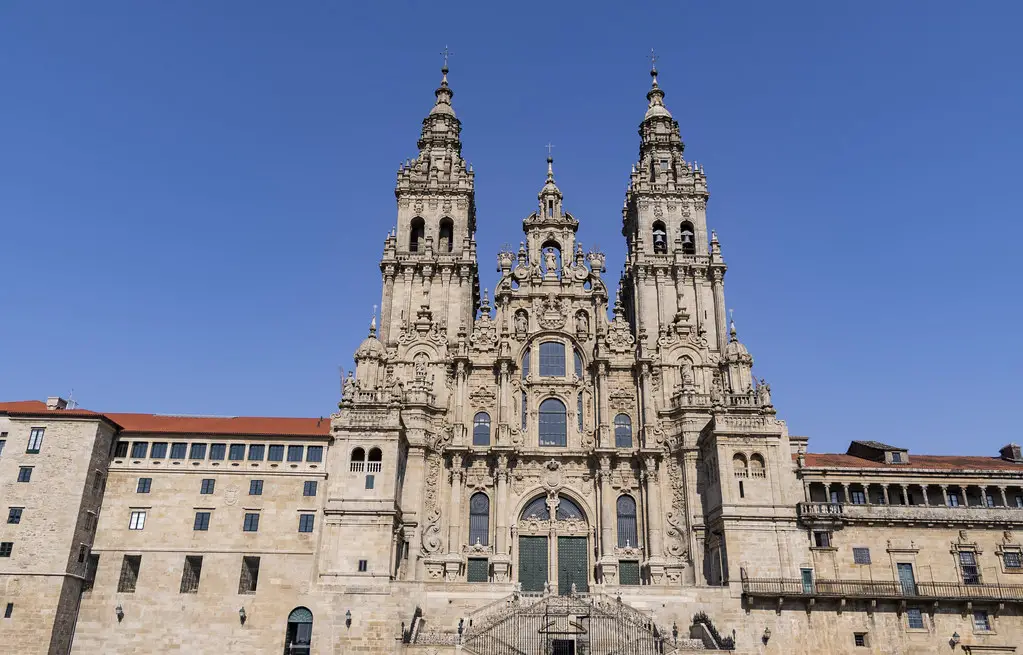
Historic building in Santiago de Compostela’s old town.
What to see or do: Admire the beautiful architecture of this 18th-century building, which was once the headquarters of the Cabildo, the institution that governed the city.
Take in the intricate stonework, wrought-iron balconies, and grand entranceway.
Don’t miss: The chance to attend a concert or cultural event in the building’s impressive Plenary Hall, which has hosted performances by renowned artists such as Yo-Yo Ma.
Insider travel tips: The Casa do Cabildo is located in the heart of Santiago de Compostela’s old town, so it’s easy to visit during a walking tour of the city.
If you’re interested in attending a concert or event in the Plenary Hall, be sure to check the schedule ahead of time and book tickets in advance.
10. Parque de la Alameda
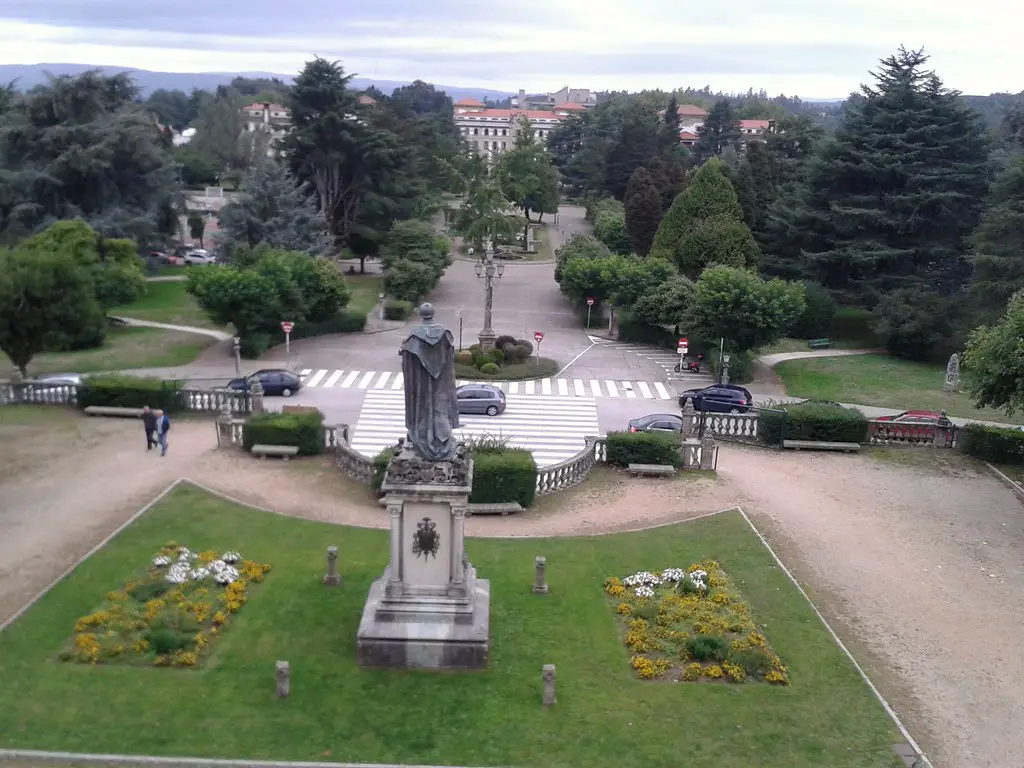
A large public park located in the city center of Santiago de Compostela, Spain.
What to see or do: Take a stroll through the gardens and admire the variety of trees, flowers, and fountains. The park also has several playgrounds for children, outdoor fitness equipment, and a skate park.
Don’t miss: The Paseo dos Leóns, a beautiful promenade lined with marble statues of lions. The viewpoint at the top of the park also offers stunning views of the city.
Insider travel tips: Visit during the evenings for a more romantic atmosphere. Join the locals and grab a snack from the nearby food market and enjoy a picnic in the park.
11. Convent and Church of San Francisco de Asís
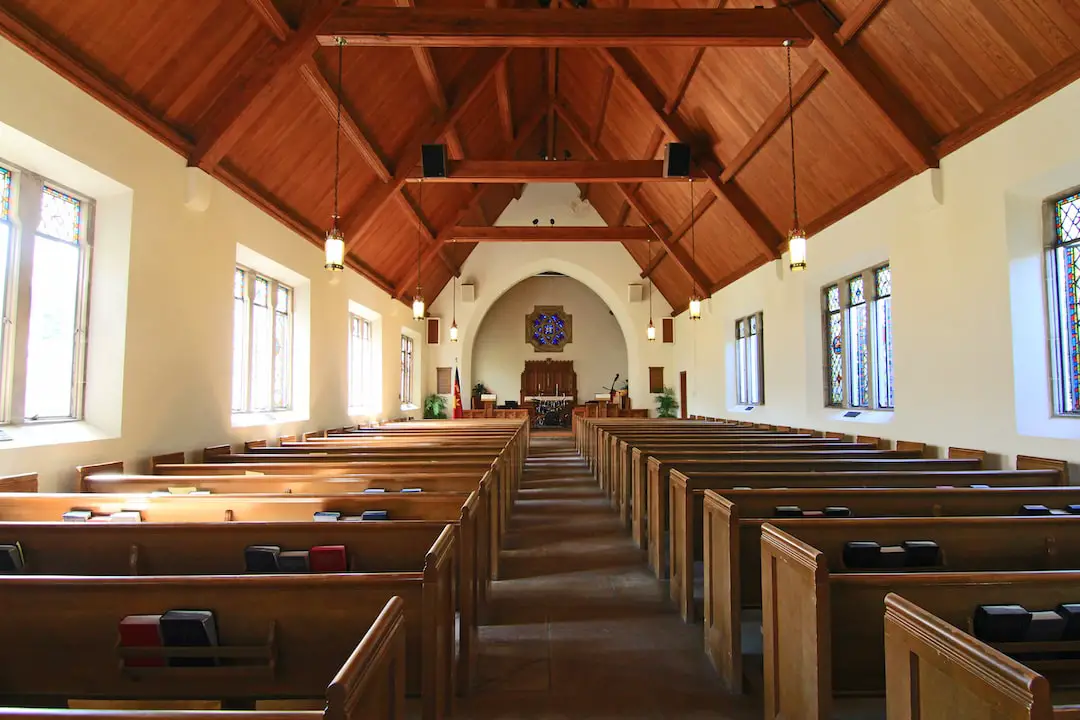
A religious complex in Santiago de Compostela, Galicia, Spain, built in the 18th century.
What to see or do: Admire the striking Baroque facade of the church, featuring sculptures of St. Francis of Assisi and other saints.
Enter the convent and explore its beautiful cloister, which is said to be one of the finest examples of Spanish Baroque architecture.
Visit the church’s interior to see its impressive altarpieces, carvings, and frescoes.
Don’t miss: The rooftop terrace of the convent, which offers stunning views of the city and the Cathedral of Santiago de Compostela. The adjacent museum, where you can learn about the history of the complex and its art collections.
Insider travel tips: Be sure to check out the various concerts and cultural events held in the church and cloister throughout the year. Consider visiting during the Feast of St.
Francis in October, when the complex is decorated and illuminated with thousands of candles.
If you’re interested in history and art, consider hiring a private guide to take you on a tour of the complex and provide context and insights.
12. Palace of Monterrey
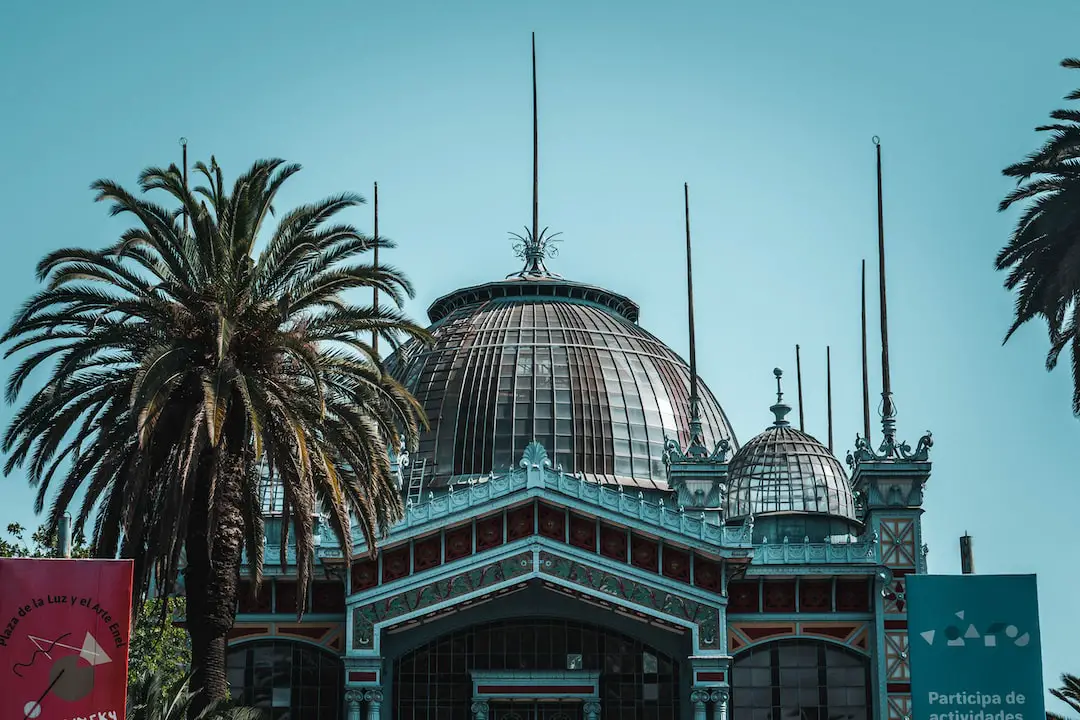
What to see or do: Admire the elegant façade, the grand entrance, and the ornate interior decorations that feature exquisite sculptures, tapestries, and frescoes.
Don’t miss: The beautiful gardens that offer a refreshing escape from the bustling city, complete with fountains, statues, and manicured lawns.
Insider travel tips: Visit early in the day to avoid the crowds and enjoy the serene atmosphere. Take a guided tour to learn interesting facts about the history and design of this remarkable palace.
13. Mercado de Abastos de Santiago
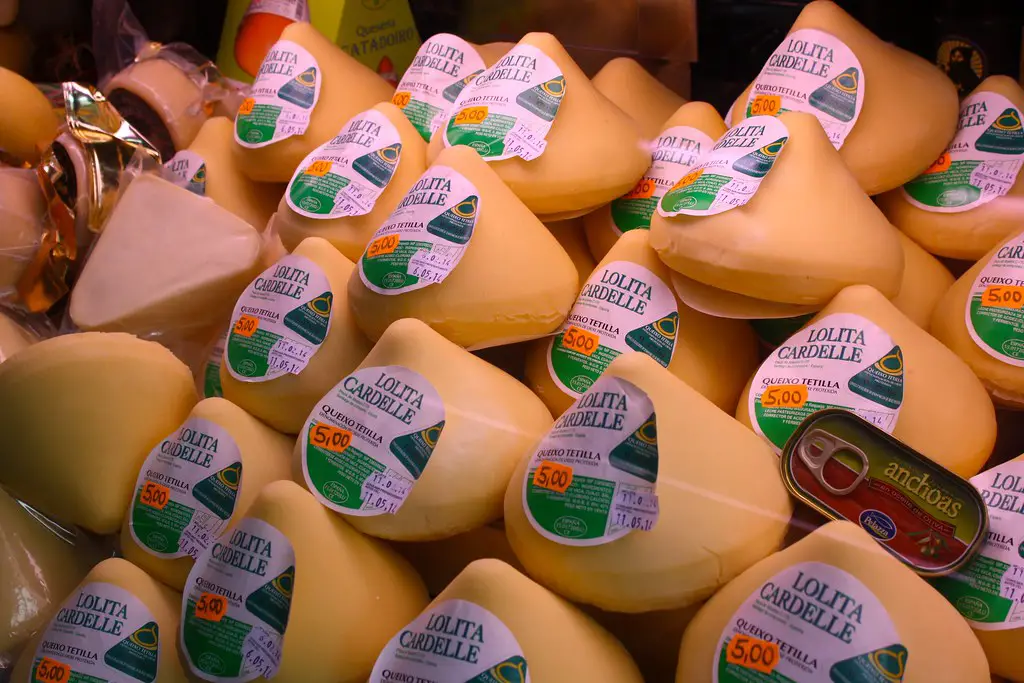
A traditional indoor market located in the historic center of Santiago de Compostela.
What to see or do: Browse through stalls selling fresh seafood, meats, fruits, vegetables and local delicacies. Take in the bustling atmosphere and watch locals haggle over prices.
Don’t miss: The fish market, where you can find a wide variety of seafood caught off the coast of Galicia. Be sure to try the famous pulpo a la gallega (Galician-style octopus) and empanadas (savory turnovers).
Insider travel tips: Go early in the morning to experience the market at its liveliest and to get the freshest produce. A basic knowledge of Spanish or Galician will be helpful for communicating with vendors.
Be prepared to taste unfamiliar foods and to try new things — the market offers a true taste of Galician culture.
14. Casa da Troya
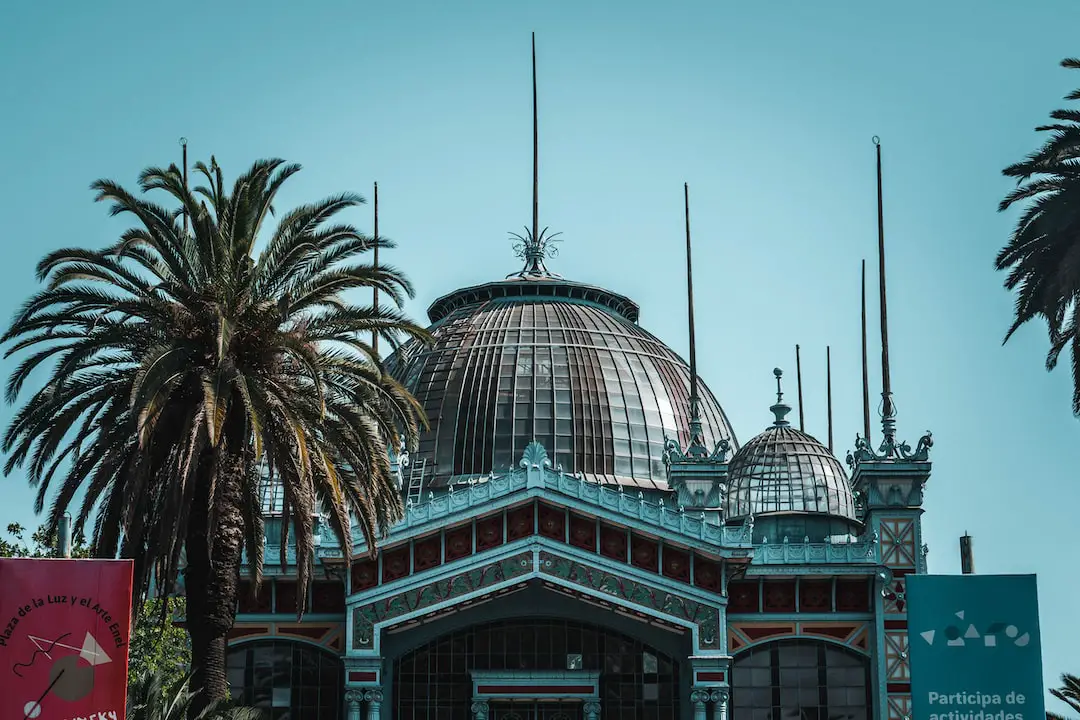
A historic guesthouse located in the heart of Santiago de Compostela.
What to see or do: Take a stroll through the charming old town, visit the Santiago de Compostela Cathedral, and explore the local food and wine scene.
Don’t miss: The beautiful courtyard where you can relax and enjoy a drink, and the charming guest rooms that are filled with character and history.
Insider travel tips: Be sure to book ahead as Casa da Troya is a popular spot for pilgrims on the Camino de Santiago. Also, ask the friendly staff for recommendations on the best local restaurants and wine bars.
15. University of Santiago de Compostela
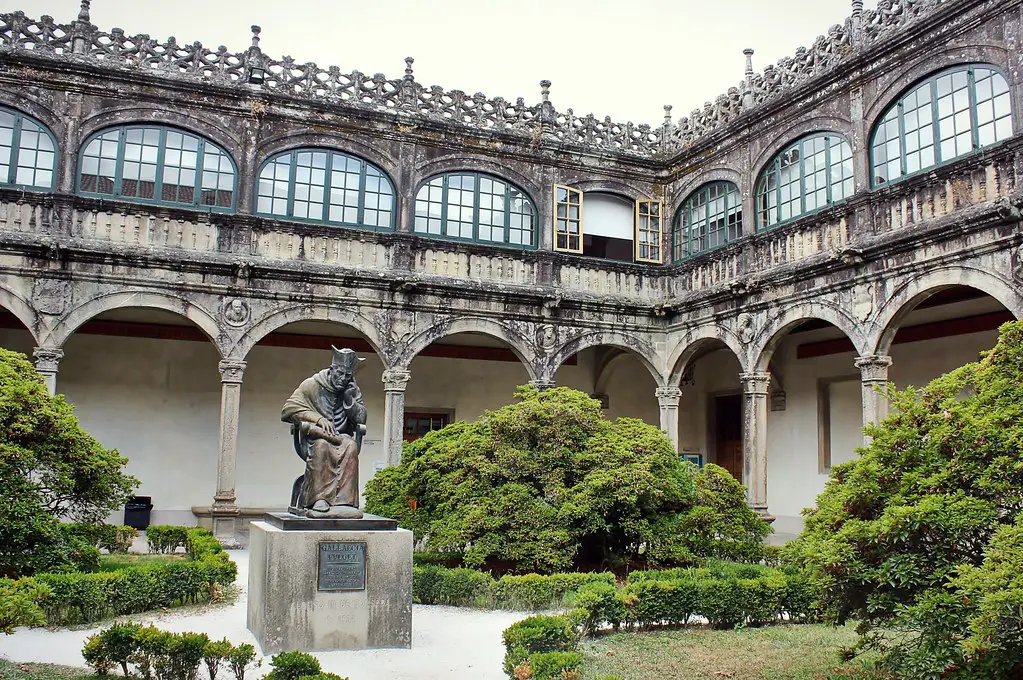
The University of Santiago de Compostela is a public university located in the city of Santiago de Compostela, Galicia, Spain. It is one of the oldest universities in Spain, founded in 1495.
What to see or do: The University of Santiago de Compostela is not only an academic institution but also a historical landmark. Visitors can take a stroll around the campus to admire the buildings’ impressive architecture and richly decorated interiors.
Some of the most stunning buildings include the College of San Xerome, the Faculty of Geography and History, and the Faculty of Philology.
The Library and General Archive of the University of Santiago de Compostela are also well worth a visit.
Don’t miss: One of the must-sees is the University’s Paraninfo, the main assembly hall in the historical building of Colegio de San Xerome.
It boasts a beautiful Baroque-style ceiling painting of the Triumph of the University by the artist Lucas Maldonado and is used today for important academic, cultural and institutional events.
Insider travel tips: The University of Santiago de Compostela is located in the heart of Santiago de Compostela city and can be easily reached by foot or bus.
The campus is open to visitors, but check the university’s website for opening times and restrictions before planning your visit. Additionally, visiting during the academic year could also offer the opportunity to attend public lectures or events.